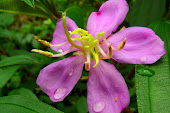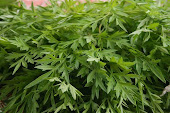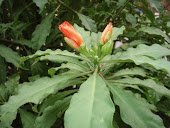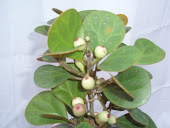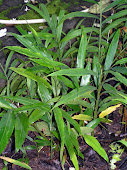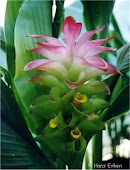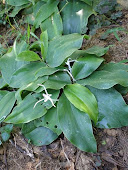- Family: Mackinlayaceae

To be found in:
- India, Sri Lanka, northern Australia, Indonesia, Iran, Malaysia, Melanesia, New Guinea, and other parts of Asia
Habitat:Grow on wet areas like orchard and plantation and along ditches
Common names:
Gotu Kola, Asiatic Pennywort, Indian Pennywort, Luei Gong Gen, Takip-kohol, Antanan, Pegagan, Pegaga, vallaarai, Kula kud, Bai Bua Bok, Brahmi, rau má(Vietnamese), Manimuni(Assamese), Bemgsag, (Brahma manduki, Brahmanduki,
Brahmi, Ondelaga (North India, West
India), Gotu kola, Khulakhudi,
Mandukparni, Mandookaparni,
Mandukaparni (South India), or
Thankuni depending on region in
India), Tapak Kuda(Indonesia)
Scientific name:
Hydrocotyle asiatica L., Trisanthus cochinchinensis (Lour.)

Description:
• stems : slender
• stolons :creeping
• Color: green to reddish green
• interconnecting one plant to another
• Rootstock: consists of rhizomes, growing vertically down, creamish in color and covered with root hairs.
• Stalk: long, green, reniform leaves with rounded apices which have smooth texture with palmately netted veins
• Leaves: grow on pericladial petioles, around 2 cm
• Flowers : pinkish to red in color, small and rounded bunches (umbels) near the surface of the soil. Each flower is partly enclosed in two green bracts, bears five stamens and two styles, and 5-6 corolla lobes per flower. The hermaphrodite flowers are minute in size (less than 3 mm)
• Fruit: densely reticulate

Medicinal effects:
• mild adaptogen, is mildly antibacterial, anti-viral, anti-inflammatory, anti-ulcerogenic, anxiolytic, a cerebral tonic, a circulatory stimulant, a diuretic, nervine and vulnerary
• A decoction of juice from the leaves is thought to relieve hypertension and also used as a general tonic for good health.
• A poultice of the leaves is used to treat open sores
• eaten as a salad leaf, pegaga is thought to help maintain youthfulness
• ability to aid wound healing usually used traditionally in leprosy
• used to re-vitalize the brain and
nervous system, increase attention
span and concentration
• has anti-oxidant properties

• used in Thailand for opium detoxification
• improve appetites
• to treat swollen and cramp legs
• avoid depression
• help to relief digestion problem
• to treat hemorrhoids
• to make the flow of the menstrual blood becoming smooth for women having menstrual problem
• act as a cure to treat white discharge from the vagina
• Decoction liquid of the leaf of pegaga can decrease the body temperature and good to be practice on patient with fever, asthma and bloody stool.
• Drinking boiling of the root of this
herb is believed to control the blood
glucose level for diabetic patients
• Acts as tonic to cleanse the blood, to
treat ulcer, syphilis and lymph nodes

• Pressing of its leaf with water is good to be apply on wound and scabies
• Have effects in development of tissue such as treat scar, build collagen and stimulate the growth of nails and hairs
• Become as a compulsory dish for women after delivering baby for quickening the healing process of the womb
Shoot of pegaga contain tetripenoid enzyme for the treatment of cancer and also use as a basic ingredient in formulating skin care cosmetic products.
Ayurvedic medicine:
For improving memory

Types of pegaga in Malaysia
1. Pegaga Cina Atau Pegaga Nyonya
2. Pegaga Daun Lebar
3. Pegaga Kelantan
4. Pegaga Renek
5. Pegaga Salad
6. Pegaga Gajah
7. Pegaga Brunei
8. Pegaga salad, like salad’s leaf
9. Pegaga hitam
10. Pegaga, found in village
Negative effect:
It can be eaten in a small quantity since it will give narcotic or toxic effects if taken in a large quantity. Eating with a large amount will give rise to the growth of cancer in the long run.

Appreciation:
(WHO) had appreciated “Pegaga” as the herbs that can improve intelligence especially among children.
References :
http://en.wikipedia.org/wiki/Centella_asiatica
http://www.hear.org/starr/plants/images/species/?q=centella+asiatica
http://pkukmweb.ukm.my/~ahmad/tugasan/s2_99/a64967.htm
http://halaqah.net/v10/index.php?topic=5610.0
http://www.bio-asli.com/herb/daun.asp#pengaga
prepared by,
Noorasyikin binti Osman
Aimi Nabilah binti Hashim





